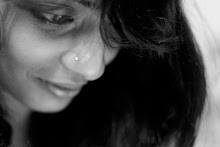Most of the content is the same as before but it seems a lot more clear when you read it in this format.
Drawing with light:
The most basic functionality of the installation is the ability to draw with a single point source of light. The colour of the light source is default set to white.
Basic single-point light source:
As the user moves the light source the infrared light emitted is picked up by the camera. The video is then processed with the software, which tracks the movement of the light and then imposes a line of light on the path of movement.
This imposed image is fed into and projected by the projector aligned with the camera. The entire process happens such that the projected path of light happens simultaneously as the light source moves so that it appears to the user as though he/ she is drawing with light.
Depending on the diameter of the single point source a simple single path appears.
Some of the possible software’s that could be used are openFrameworks, Max/ MSP/ Jitter, Processing…
Choosing the colour:
The user uses the “paint box”, which is a table with a number of cavities. Each cavity is lit up with specific colours. When the light source is dipped in a cavity of a particular colour, it picks up that colour. The user can thus select the desired colour and start drawing.
Another solution:
The point sources are equipped with a dial that rotates. As the dial is rotated, the colour of the point source changes across a RGB spectrum. The user stops at the desired colour and starts drawing. The camera records and sends what is drawn through the software. The software recognises the colour picked up by the camera and projects the path back in the same colour.



Erasing:
All the drawing that has been created will automatically fade away after a minute. However if something specific has to be erased it can be done so by covering the area with the provided eraser (which will be opaque and black piece similar to a duster). As the “eraser” is moved over the desired area, it is recognised by the software and the drawing under it disappears.
Other brushes/ sources of light:
Besides the basic point light, the user will be provided with a number of sources of light, which will create different kinds of strokes when drawn with. When the user draws with these sources, the camera picks up the size, colour, shape and number of the lights emitted and the software imposes a path of light in the same dimensions as that of the source.
Effects with light: Painting behind an object:
This happens when light is painted behind a certain object or person. For this the software continues to project the path of light as it is created. However, when the object is in front light does not reach the camera and thus a silhouette is created.

Animation of light drawings:
Within the software, there will be a series of objects, which when draw, will be recognised and animated.
If for example, the image of a cloud drawn with light has been fed into the software, then when the user draws it the same way with the same source of light the software will recognise it and will automatically animate it to, let us say rain.
Alternative:
The user is provided with a number of stencils of certain objects. Light is flashed across the stencil so that the image is stencilled on the screen clearly. This helps standardize the image that is to be recognised by the software and subsequently animated.
Further Interaction:
When another interactive object is placed near the already animated object, the software recognizes this software as well and projects the new animation in accordance with the object drawn.

No comments:
Post a Comment